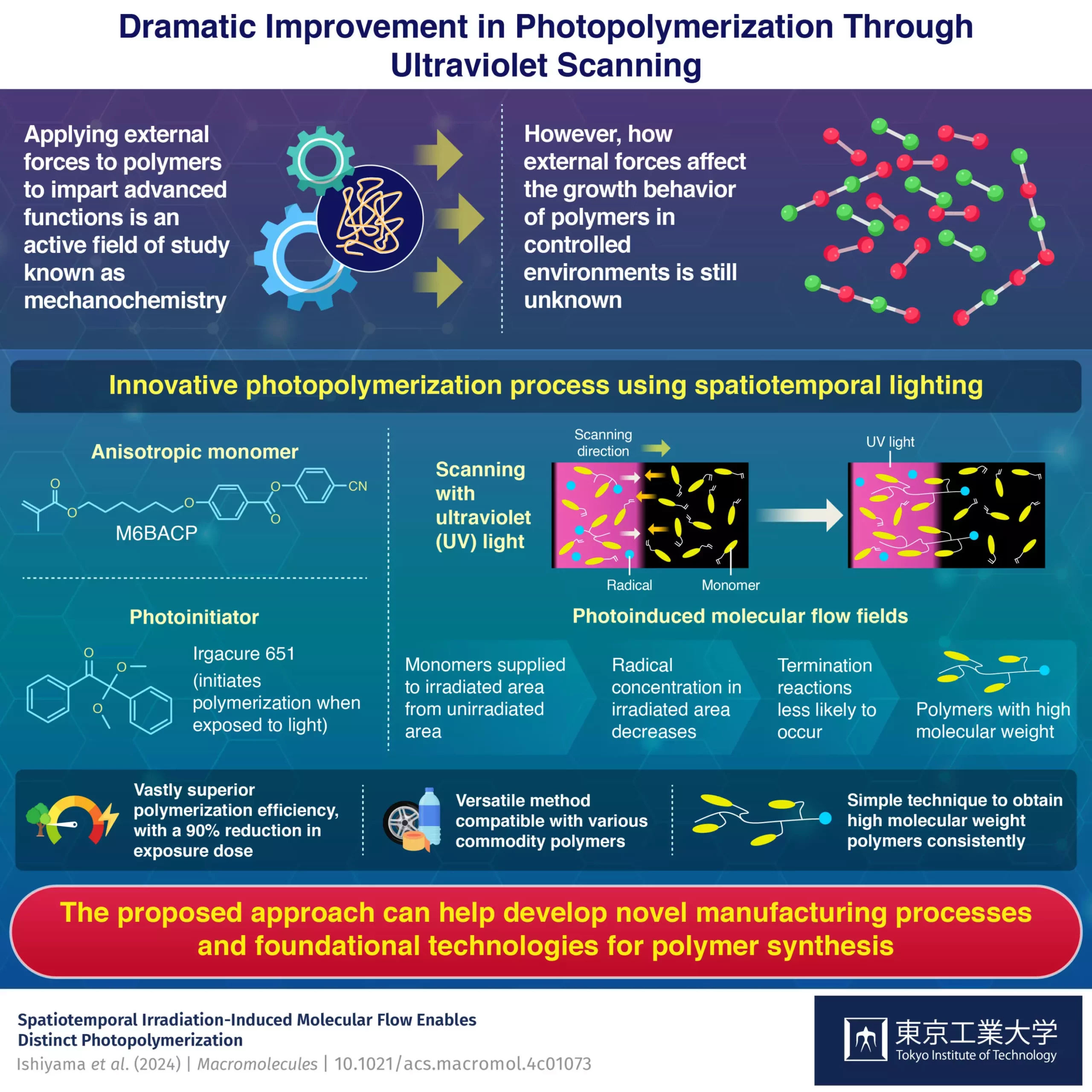Polymers are complex materials that are made up of long chains of molecules, and the way these chains interact with each other plays a crucial role in determining the properties of the polymer. Traditionally, external forces acting on polymers have been viewed as destructive, but recent scientific advancements have shown that these forces can actually have a constructive impact on polymers. Mechanochemistry, the study of how mechanical forces and flow fields can affect polymers, has opened up new possibilities for controlling the synthesis and properties of polymers.
Research Study
A research team led by Professor Atsushi Shishido from Tokyo Institute of Technology recently conducted a study to explore how external forces, specifically flow fields induced by dynamic UV lighting, can influence the process of photopolymerization. By shining UV light through a slowly moving slit instead of uniformly irradiating the entire solution, the researchers were able to significantly alter the properties of the resulting polymer. This simple strategy resulted in high molecular weight polymers with a 90% reduction in the required exposure dose compared to traditional photopolymerization methods.
The researchers theorized that the movement of the UV light induced molecular flows that had two main effects on the polymerization process. Firstly, the movement of the polymers towards the unirradiated area allowed them to continue growing by interacting with newly available radicals. Secondly, the diffusion of radicals and monomers between irradiated and unirradiated areas helped to maintain a lower concentration of radicals in the irradiated areas, reducing the likelihood of termination reactions and limiting the length of polymer chains.
This study not only provides valuable insights into the mechanisms of photopolymerization reactions but also offers a practical technique for improving industrial processes and polymer materials. By simply adding movement to the irradiation light, without the need for any changes to the compounds or reaction systems, the researchers were able to enhance polymerization efficiency and reduce energy costs. This technique has the potential to be applied to a wide range of industrial applications and could lead to the development of more sustainable manufacturing processes for polymers.
The findings of this study demonstrate the importance of considering the effects of external forces on polymer synthesis. By leveraging the power of mechanochemistry and dynamic UV lighting, researchers were able to achieve significant improvements in polymer properties and synthesis efficiency. This research opens up new possibilities for creating high-quality polymers in a more sustainable and cost-effective manner, paving the way for future advancements in polymer science and technology.


Leave a Reply